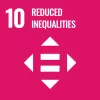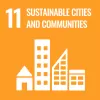United Kingdom
participants
The ‘It’s a small world project’ had two main objectives:
- To promote international mobility to pupils of a young age in a way that defies classroom-bound learning
- To involve current Erasmus and international students in Durham student and community life through volunteering
The target group of the project was local children from IMD (Index of Multiple Deprivation) and ACORN indicators which would normally be eligible for similar outreach projects. The schools invited were therefore from more deprived areas in the North-East of England. The scope of the project extended from the local Durham area, to further afield such as Darlington and Middlesbrough.
The age range of the pupils was set at 7-8 years of age (Year 3-4). This was in line with the project’s aim of teaching children about culture at a young age, in the hope of promoting mobility in the future.
The project was held at Durham University’s Sports and Wellbeing Park at the beginning of April 2022. It was approximately 4 hours long (10:00-14:00) and involved participation from 6 primary schools, who attended from 2 different counties. Around 170 children in total participated in the event. The project was facilitated by approximately 20 volunteers, including both Erasmus and International student volunteers, as well as ESN Durham section members. The event was also supported by Durham University Volunteering and Outreach. The format of the project included 4 workshops, each presenting a different culture to the children.
Project Format
The project consisted of 6 different workshops, representing 5 cultures in total. The countries represented were France (x2), Cuba, China (x2), Vietnam and Greece. The duration of each workshop was 45 minutes, which included time for tidying and moving to the next activity. Each school visited 4 of the 5 cultures on offer, with two different activities being provided for France. The activities available were as follows:
France
- Activity 1
The first activity was a construction activity that saw children asked to make the tallest tower possible out of spaghetti and marshmallows. The format of the activity included: asking the children what they knew about France already, teaching them some facts about France, getting them to build the towers, announcing the winner. The children found this a fun activity, and it provided a more hands-on activity in contrast to some of the others on offer.
- Activity 2
Cuba
- This activity involved teaching the children salsa. The instructor started the activity with an introduction to Cuba, indicating it was a Spanish-speaking country and giving some context to the country. Disney’s new film Encanto was used to provide a familiar, popular and age-appropriate link to the activity, in that the instructor’s abuela and abeulo taught them how to salsa.
The activity then progressed to learning the basic salsa steps, which were introduced in Spanish and then translated into English for the children. The children were given time to practice to music after the introduction of each step, which were then combined into a full routine. Some partner work was also introduced.
China
- China’s workshop was split between two rooms, but the activity provided was analogous. The activity included teaching pupils some basic Chinese phrases, and showing them the alphabet. Pupils were then asked to craft and design lanterns using Chinese stickers and symbols. They were taught basic greetings
Vietnam
- Vietnam’s activity included playing a game of tick tack toe, whereby 4 in a row was needed to win, followed by 3 in total for the next round. The first round detailed cultural elements from the North of Vietnam, and the second round concerned Central Vietnam. After each nought or cross was placed, a picture would show a part of Vietnam, of which the cultural relevance would then be explained. Pupils were divided into teams, which would then nominate a team captain to play the game. The game was very informative and provided a lot of information about Vietnam. There were also lots of opportunities to ask questions throughout. The workshop finished with a relay race. Pupils were shown a picture from the powerpoint and were asked to point to whether it was from the North or Centre of Vietnam, with the winner earning a point for their team. N.B. it could have been useful to emphasise the differences between North and Central Vietnam (e.g. make the segue between the two portions of the presentation so that the final activity made more sense.)
Greece
Greece’s activity included a ball game. In this session the children had the chance to engage with two games that are particularly popular in Greece, ‘Apples’ and ‘Lice’. Please see the following link for descriptions of the Apples:
Passports
At the beginning of the day, pupils were given pretend ‘passports’ from their ‘flight attendants’ i.e., the guides that accompanied each school around the venue. At the end of each activity, pupils were given a sticker of the country’s flag for their passport, which aimed to imitate passport stamps. This added to the idea of visiting each country, in addition to the physical movement to and from each room, which allowed for an accessible introduction to the idea of mobility.



